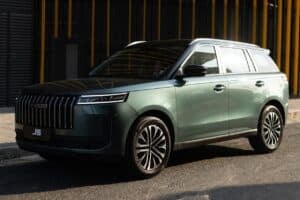Latest generation G-Class remains astronomically expensive and powerful, but arguably the Benz to have.

The Mercedes-Benz G-Class, or better known simply as G-Wagen or G-Wagon, has been in production since 1979 and, in that time, has become the most sought-after if not possibly the most aspirational three-pointed star model on-sale today.
Its rise to becoming the Benz to have, arguably more so than an S-Class, is well documented: a vehicle devised for the military that quickly became a status symbol not even its equally iconic sedan sibling could match.
Evolution over revolution
Earlier this year, the 600 000th G-Class rolled out of the Magna Steyr assembly plant in Graz, Austria, a feat made more impressive considering that each G has largely been handmade over the last almost 46 years.
Similar in concept to the Porsche 911, each generation has been more evolutionary than revolutionary as evident by how little it’s boxy exterior has changed.
NOW READ: VIDEO: Mercedes-Benz G580 shows electric cars can have fun too
Carefully refined over each of the four generations, the shipping container aesthetic hasn’t seen its appeal diminish.
The same goes for the interior, which has been carefully revised and modernised instead of being completely redesigned.
The new G
Shown in March last year, the current W465 appears almost identical to the preceding W463, which left production early last year after six years, the shortest lifecycle of any previous G-Class.
The latest evolution has also seen the arrival of electrification, not only in the guise of the controversial all-electric G580, but also for the flagship G63 that has been seen as the ultimate G-Class since it first arrived in 2012.
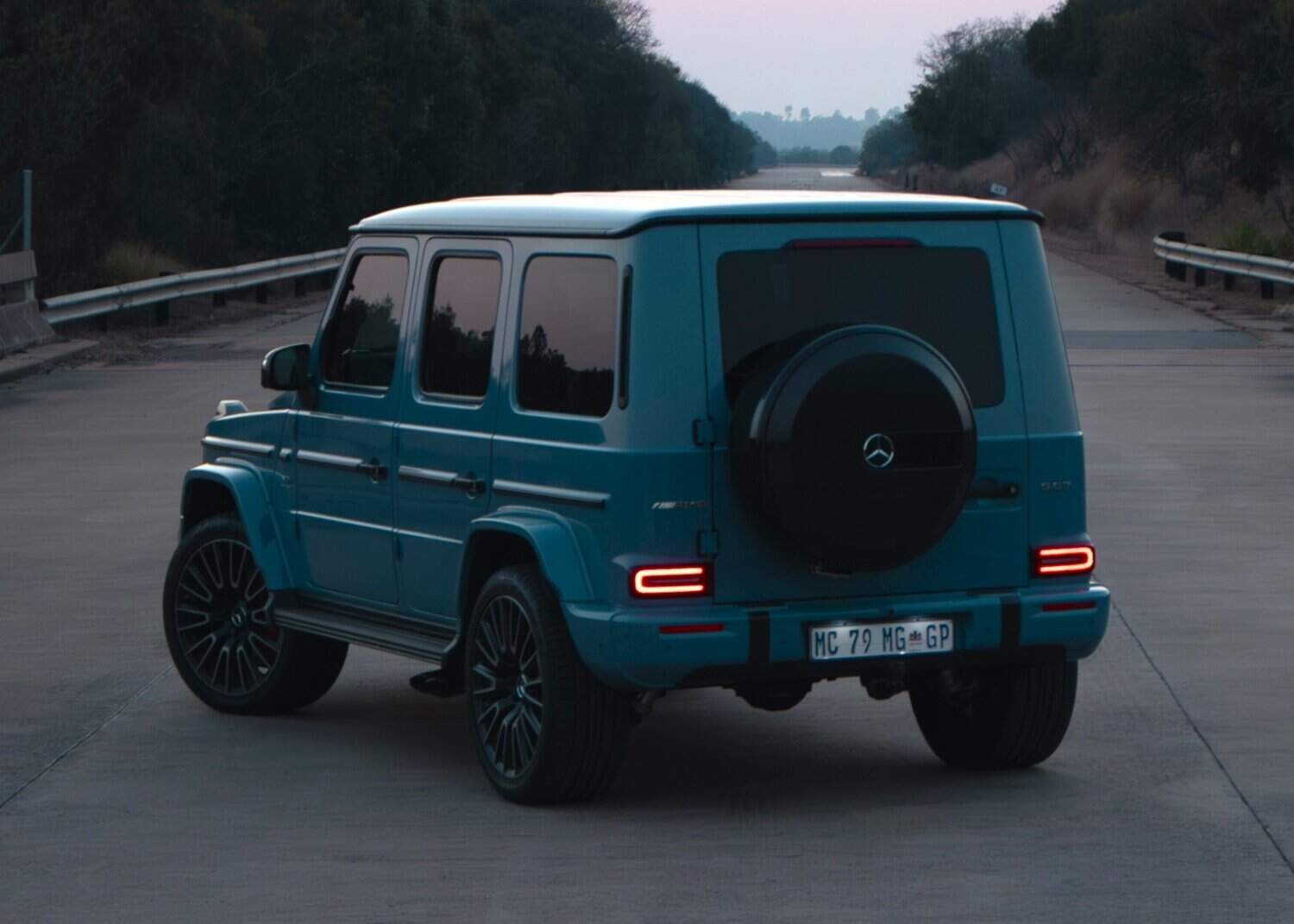
While the diesel G-Class, now wearing the G450d designation, arguably presents the “most complete” version to have, the G63 still makes the biggest statement both image-wise, plus its obscene R4 458 731 sans options price tag.
Still as capable as ever with low range and the three locking differentials – neither likely to be ever used in conjunction with the road-biased 22-inch wheels – the arrival of the G63 for the seven-day stay also came with a question.
Now with the 48-volt mild-hybrid EQ Boost system is included, could it still be the ultimate G versus the G580?
Boxed Benz
As has become the norm, the G63 is anything but restrained as the evolution from the W463 to W465 has seen Benz tweak the front and rear bumpers, the Panamericana grille and the headlights, which now receive the adaptive Multibeam LEDs.
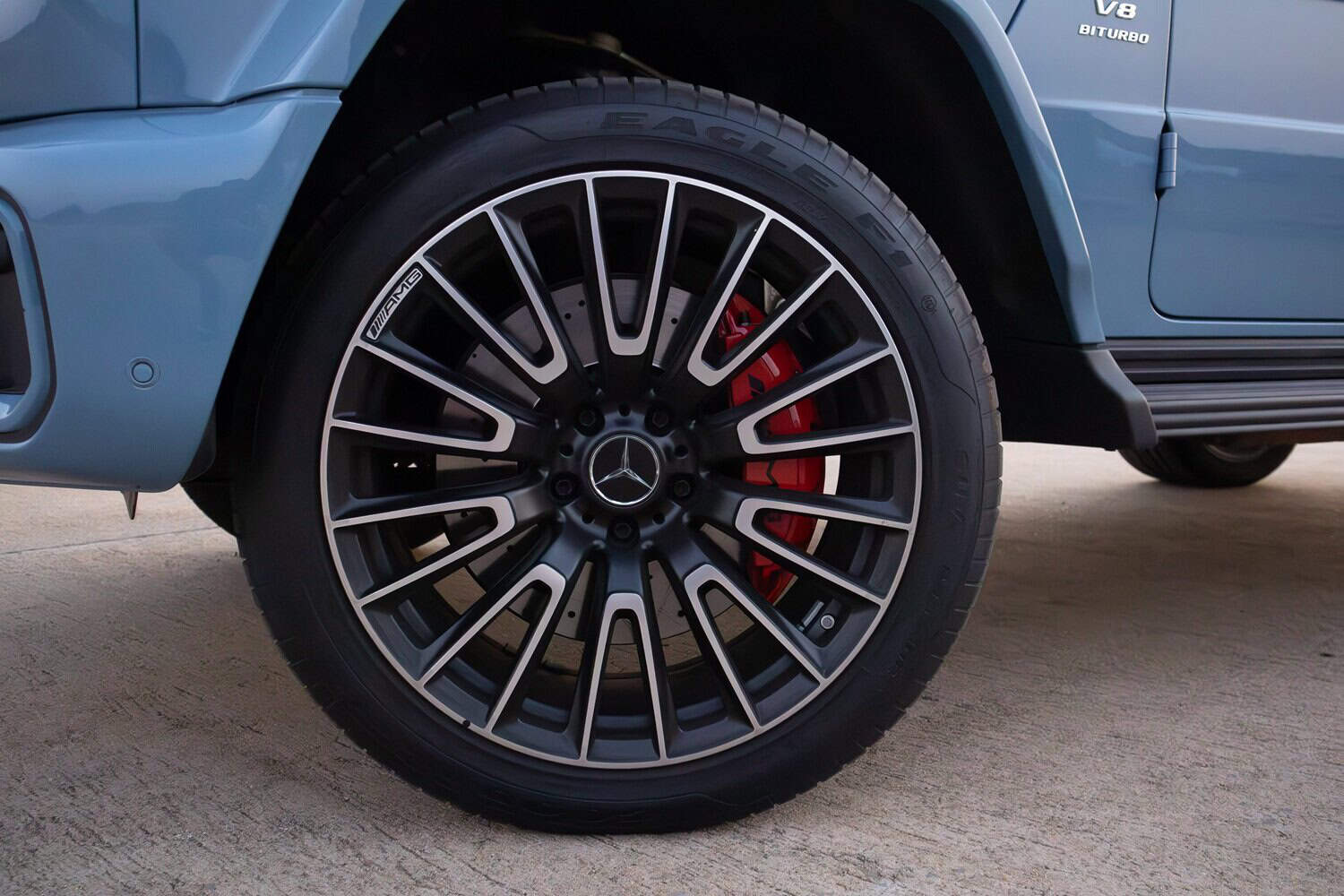
Taking matters a step further, which contributed to the G63 attracting even more attention, was the test unit’s new blue colour option called Hyper Blue Magno.
The inclusion of the AMG black styling package and carbon finish on the spare cover added further menace to the G63, arguably more so than in the traditional white, silver, black or grey.
Welcome MBUX
Opening the door by a very 1979 door handle that locks and unlocks with an almost AK47-sounding clang reveals the G’s biggest improvement, but also annoyances.
Given its almost R5-million price tag, fit-and-finish leaves little to be desired as, apart from the usual leather and alloy inserts, the test unit also sported rear carbon fibre on the centre console.
While the trademark grip handle on the passenger side has been kept, the biggest welcome is the long-awaited inclusion of the MBUX infotainment system.
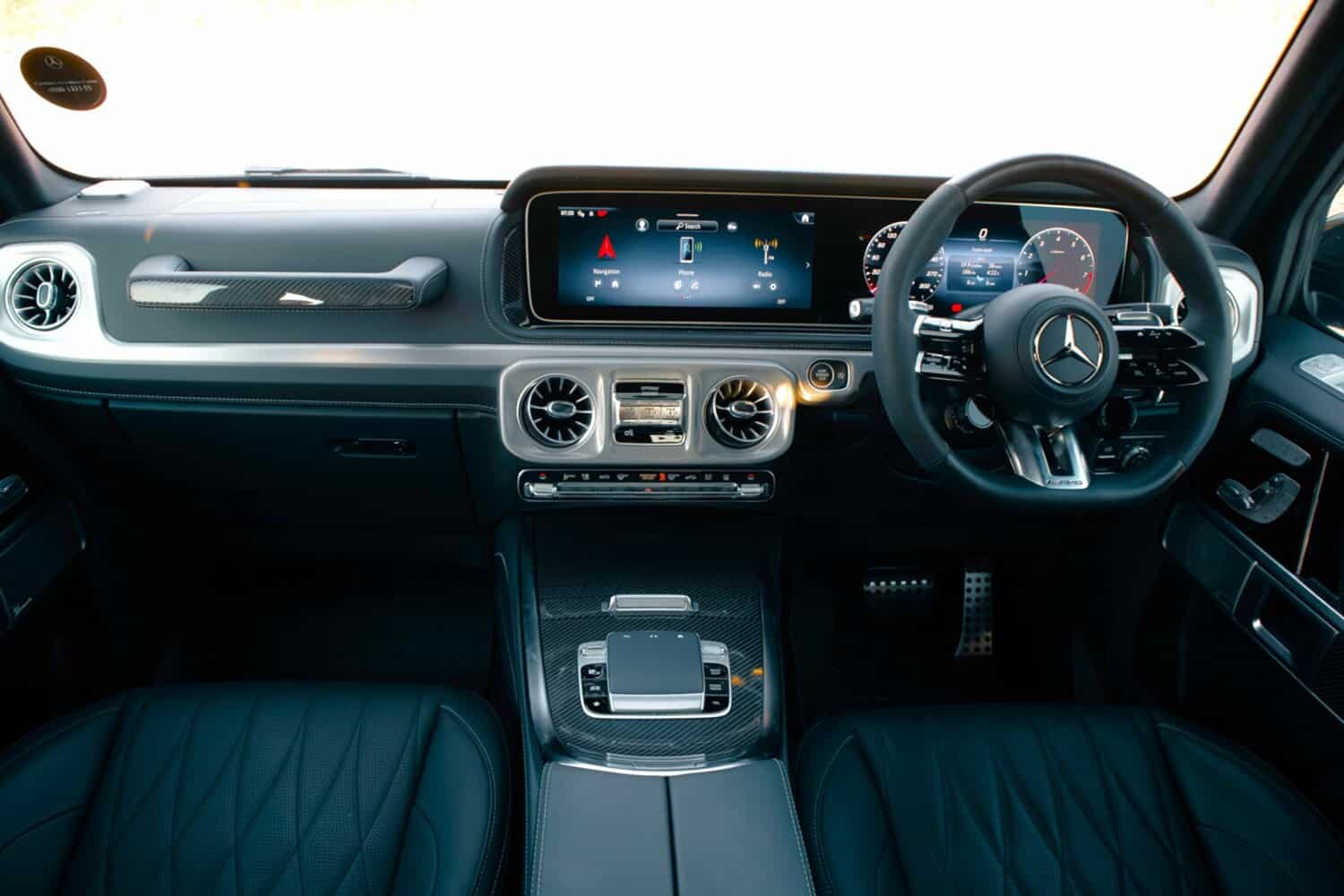
Integrated into the 12.3-inch display that forms part of the dual setup carried over from the W463, the replacement for the dated Comand interface still requires familiarisation, but works considerably better and without the same level of frustration.
That being said, the touchpad on the console is still finicky and although the screen itself is touch compatible, it does require some stretching, leaving the haptic pad and its surrounding physical shortcut buttons as the only option.
Not completely perfect
More of a faff is the AMG Performance steering wheel, which relies solely on touch-sensitive inputs.
Nowhere as intuitive as physical buttons, using it to scroll through the instrument cluster proved annoying and in need of a rethink.
The same also applies to the air-conditioning interface. While Mercedes-Benz has kept an array of buttons below the turbine-style air vents, accessing the more in-depth settings still requires going into the infotainment system.
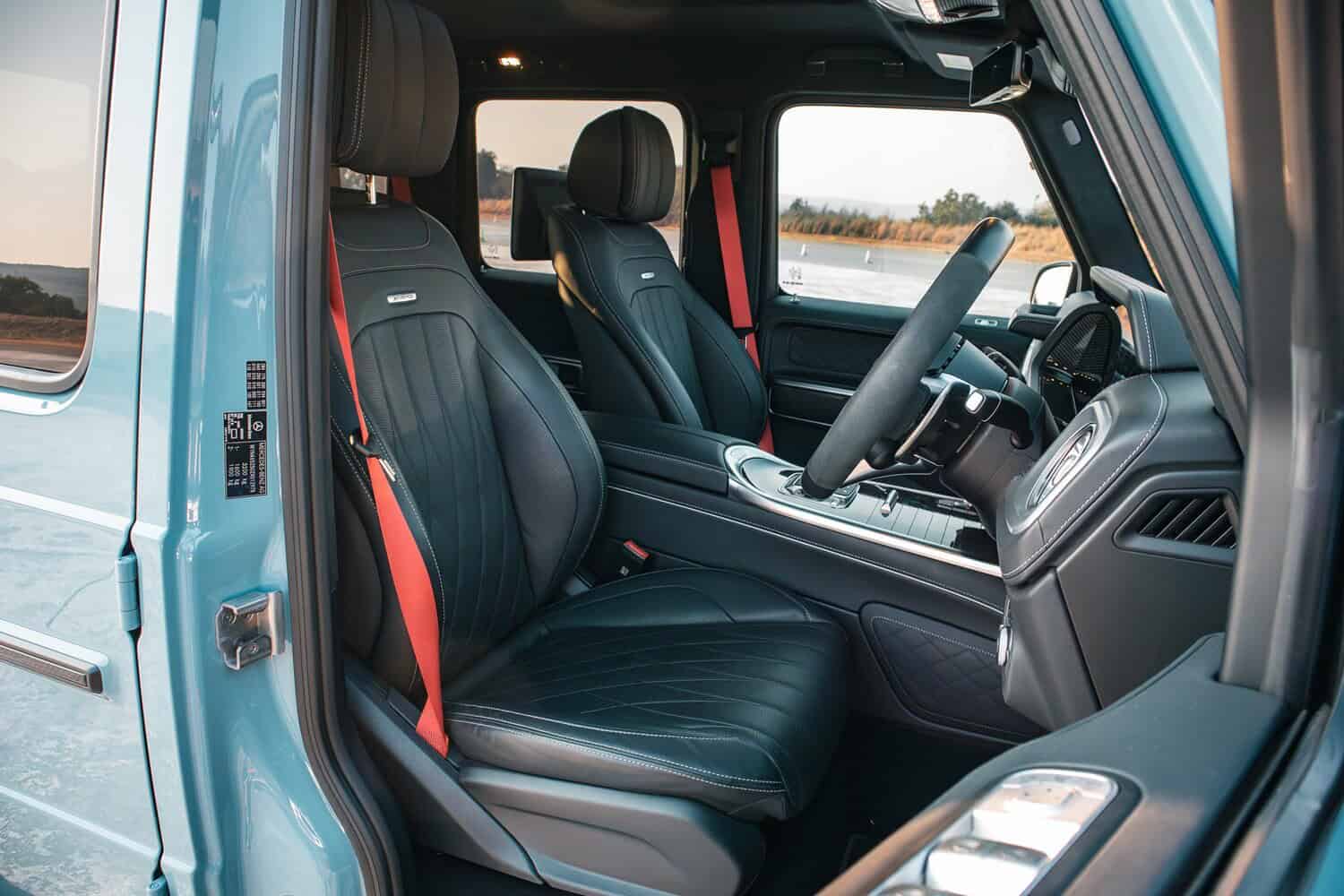
Away from this, the rest of the G63’s interior is more sorted with little to moan about on the practicality front.
However, while no qualms about head-and-legroom prevailed, the heated and cooled rear seats will prove too “upright” for some even in their furthest reclined back position.
Representing the opposite, the Nappa leather-trimmed heated, ventilated and massaging AMG sport seats up front provided ample support and comfort, perhaps more so than the optional AMG Performance chairs.
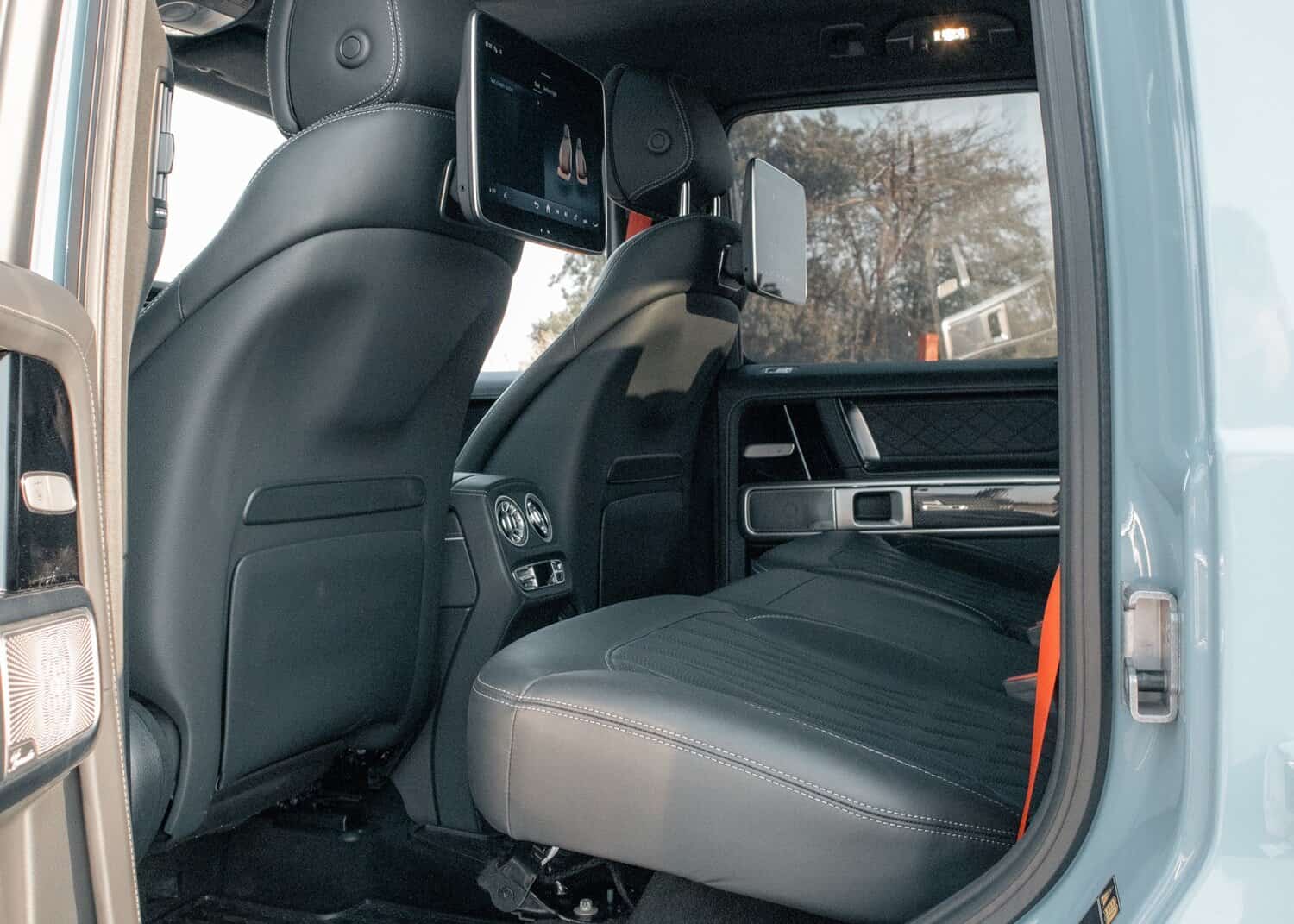
Aside from comfort, the test unit also featured red seatbelts, the superb Burmester sound system and a pair of 11.6-inch displays as part of the optional rear seat entertainment system.
Similar to the doors, which require an element of force to open and close, opening the side-hinged tailgate reveals what looks to be a small boot when taking the G’s blocky exterior into mind.
Able to accommodate 640-litres, though, dropping the rear seats frees up an additional 1 370-litres for a total of 2 010-litres.
Watch the noise lift…
Unsurprisingly, the G63’s main attribute is its savage performance and tendency to become light at the front when accelerating.
With the Dynamic Select mode and AMG adaptive dampers switched to Sport+, the G63 becomes instantly violent as the 4Matic+ all-wheel drive has been engineered to send most of the power and torque to the rear axle.
The result is the same nose lift as before, as the rear hunches down and the full 430kW/850Nm is released in a never-ending torrent of brutal acceleration.
While the EQ Boost system provides an additional 15kW/200Nm for short spells, the 4.0-litre bi-turbo V8 isn’t immune from low-down lag as a momentary lapse in response is still noticeable.
What remains is the engine’s metallic and angry soundtrack, which sounded like a WW II fighter when let loose at Gerotek, so test it against the G580.
Based on its comparatively light mass of 2 640 kg versus its sibling’s 3 085 kg, the G63’s reduced torque output, but greater power still paid off as it completed the 0-100 km/h sprint in 4.4 seconds versus the EV’s 4.6 seconds with Road Test Editor Mark Jones at the wheel.
In reality…
Away from Gerotek, and in the confines of everyday use, the G63 surprised the most as, apart from its newfound air suspension, Mercedes-Benz has replaced the anti-roll bars with hydraulics as part of the AMG Active Ride Control system reserved solely for the G63.
In addition, the steering has been retuned with the result that the G63 not only rides considerably better than its predecessor, but with a more connected and sharper feel with each turn.
As before, drive is routed to all four wheels through a nine-speed MCT transmission, which, while slick in everyday use, becomes sharp and quick when tasked with matching the engine’s brutal side.
Despite its feather mass compared to the G850, the G63 still feels weight. Fitted with larger new 354 mm at the front and 345 mm at the rear discs, hitting the brakes still sees the G’s nose dipping down similar to how it raises under acceleration.
Of little significance considering its price, fuel consumption hasn’t benefited much from the mild-hybrid system.
Only with extreme care and without resorting to the Eco mode did the G63 achieve a best indicated figure of 16.5 L/100 km.
Driven normally, expect figures closer to 18 L/100 km or well over 20 L/100 km with some vigour introduced – the latter set to require frequent visits to the pumps to fill the 100-litre tank.
Conclusion
As much as it is the Mercedes-AMG to have, the brutal truth is that the G63 is still pointless given that it will never be used where it was intended 45 years ago.
Along with its foolish price tag and dynamics easily beaten and bettered by the S63 E Performance, the G63 is still silly and without the same all-around effortlessness and sophistication as a Range Rover.
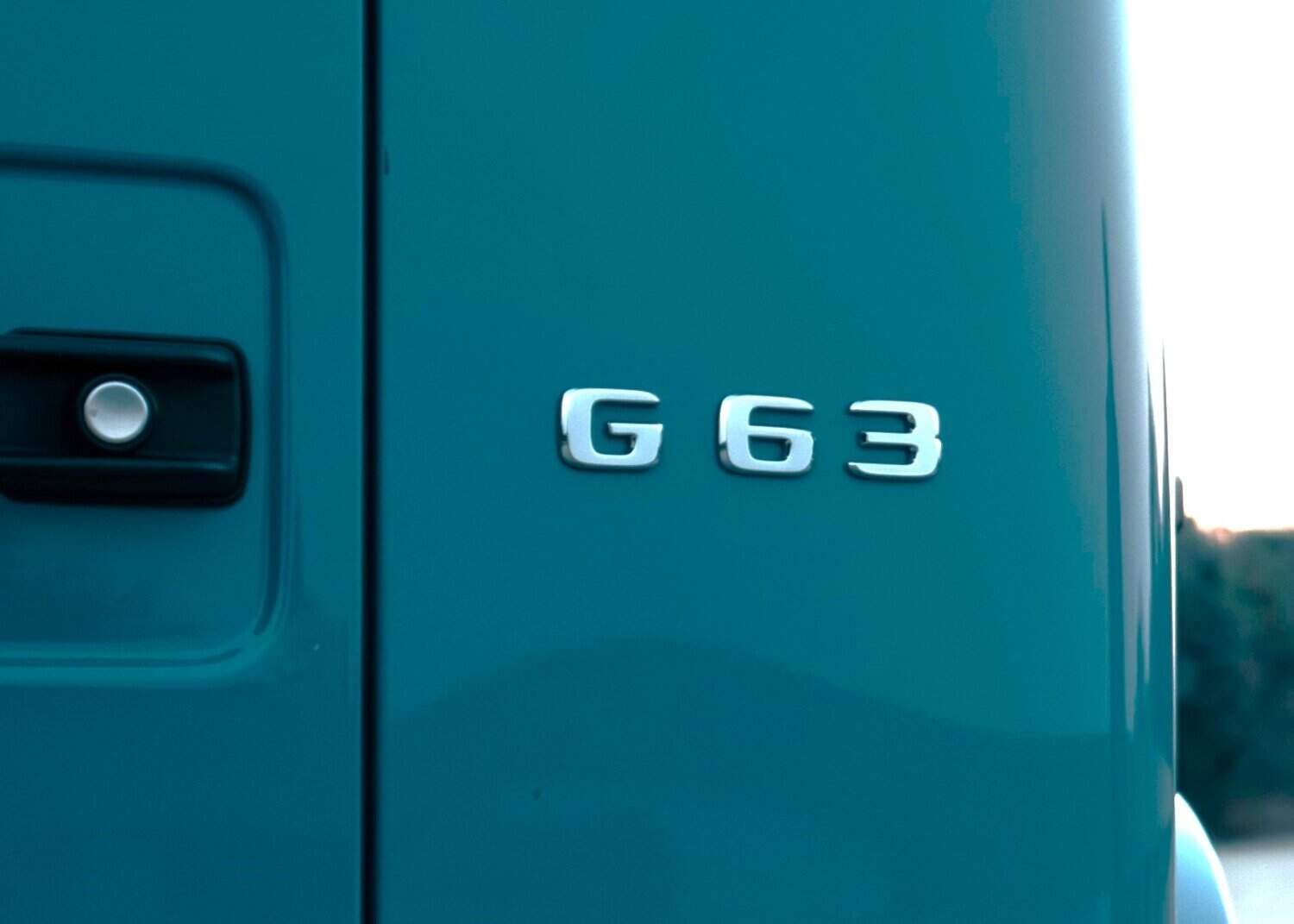
However, its brashness and love-it-or-hate-it cool image ultimately triumphs in a manner the offering from Solihull cannot come close to.
Call it the x-factor, the G63 has it in spades, regardless of its detractors or how many zeros on its sticker.
Road Test Data
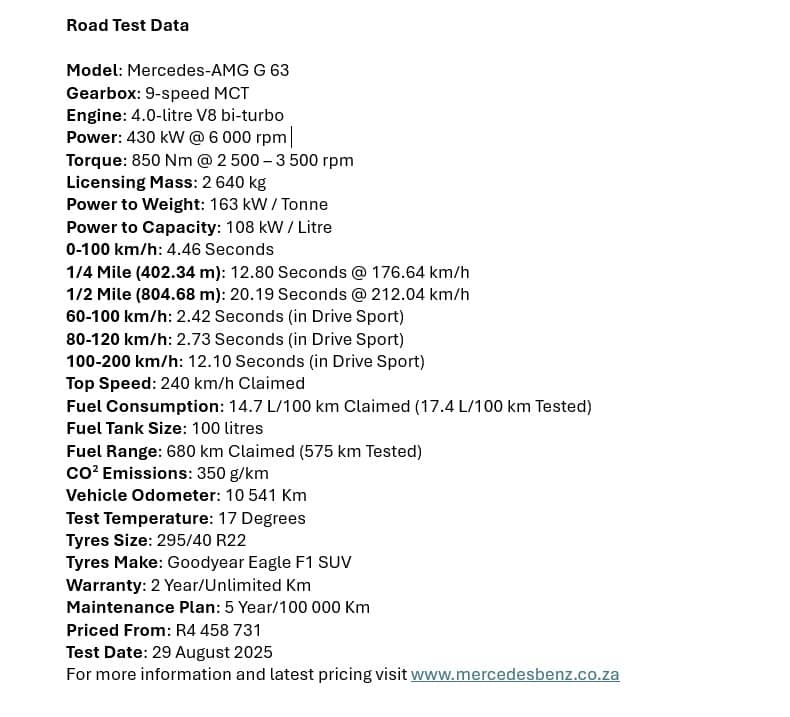
NOW READ: From army hero to civilian icon: Mercedes-Benz G-Class turns 45






